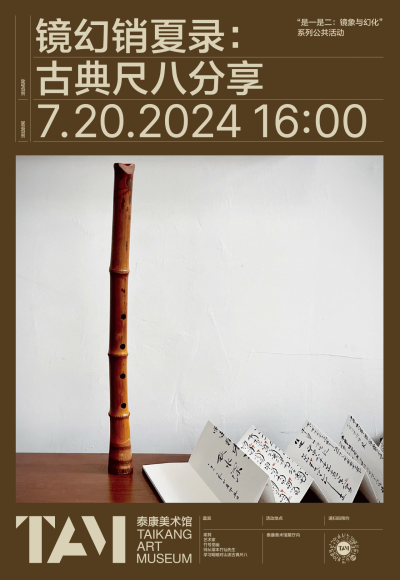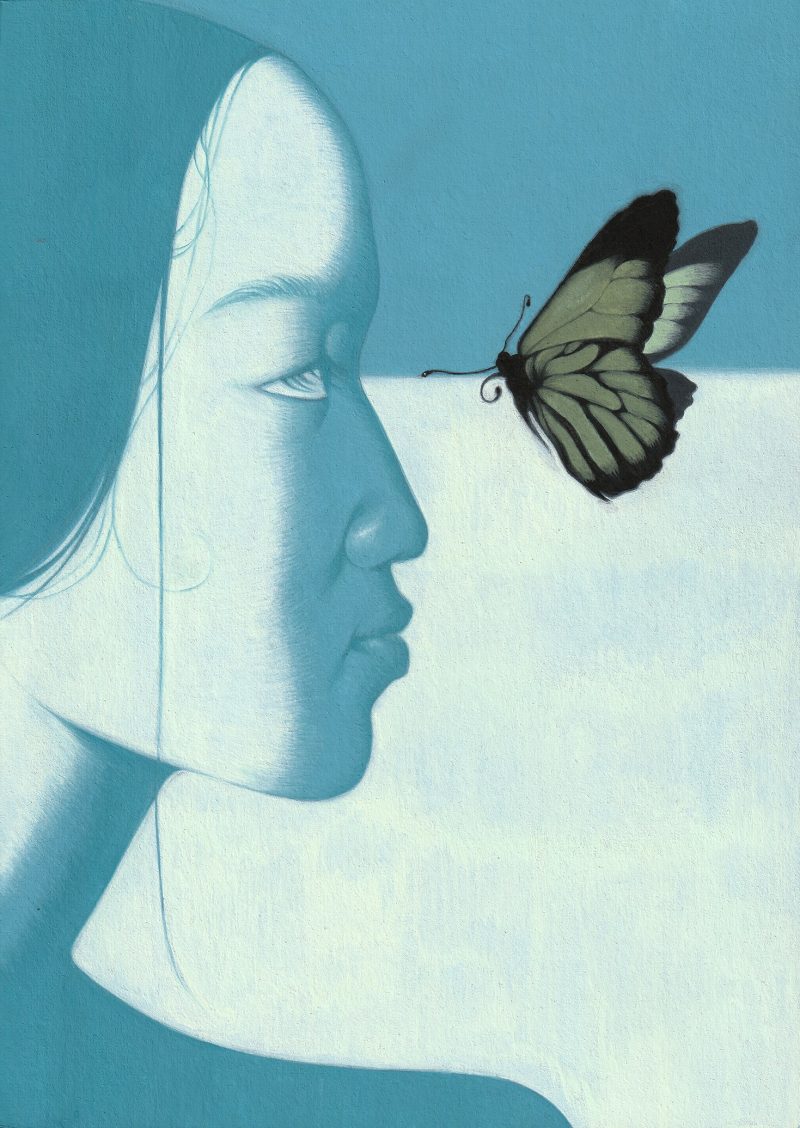2024.07.20
Mirrored Summer: Classical Shakuhachi Sharing Secession
- Time2024.7.20 4:00PM
- VenueTaikang Art Museum
- GuestXie Qi
- Tags:

The chiba (shakuhachi) is not only a precious heritage of China but also became part of Japanese culture as Buddhism spread eastward.
In the Southern Song period, a Japanese monk Shinchi Kakushin came across Zhang Can, a lay Buddhist renowned for his mastery of the chiba, at Huguo Renwang Temple in Hangzhou. This serendipitous meeting allowed Shinchi Kakushin to master the art of playing the chiba and bring it to Japan, where he founded the Fuke sect, which uses chiba – now called shakuhachi in Japan – playing as a form of spiritual practice. From then on, the shakuhachi became a ritual instrument for monks of the Fuke sect. However, in China, the chiba gradually faded into obscurity.
In 1999, Takahide Tsukamoto, the fourth-generation successor of the renowned Japanese shakuhachi school “Meian Taizan-ryu,” became a disciple of Zhao Songting, known as the “Flute King of Jiangnan.” He vowed to his master to reintroduce the shakuhachi to China. Since then, Mr. Tsukamoto has traveled to China multiple times each year at his own expense, teaching and promoting the shakuhachi free of charge. Over the past two decades, he has taught hundreds of students. Although most gave up due to the difficulty of classical shakuhachi, a few passed the rigorous examinations and earned the teaching qualification of Meian Taizan-ryu.
In this sharing session, artist Xie Qi will recount his experience studying classical shakuhachi under Mr. Takahide Tsukamoto. Through four performance pieces, he will guide the audience in appreciating the instrument’s ethereal and expansive sound, offering a close-up experience of its unique charm.


